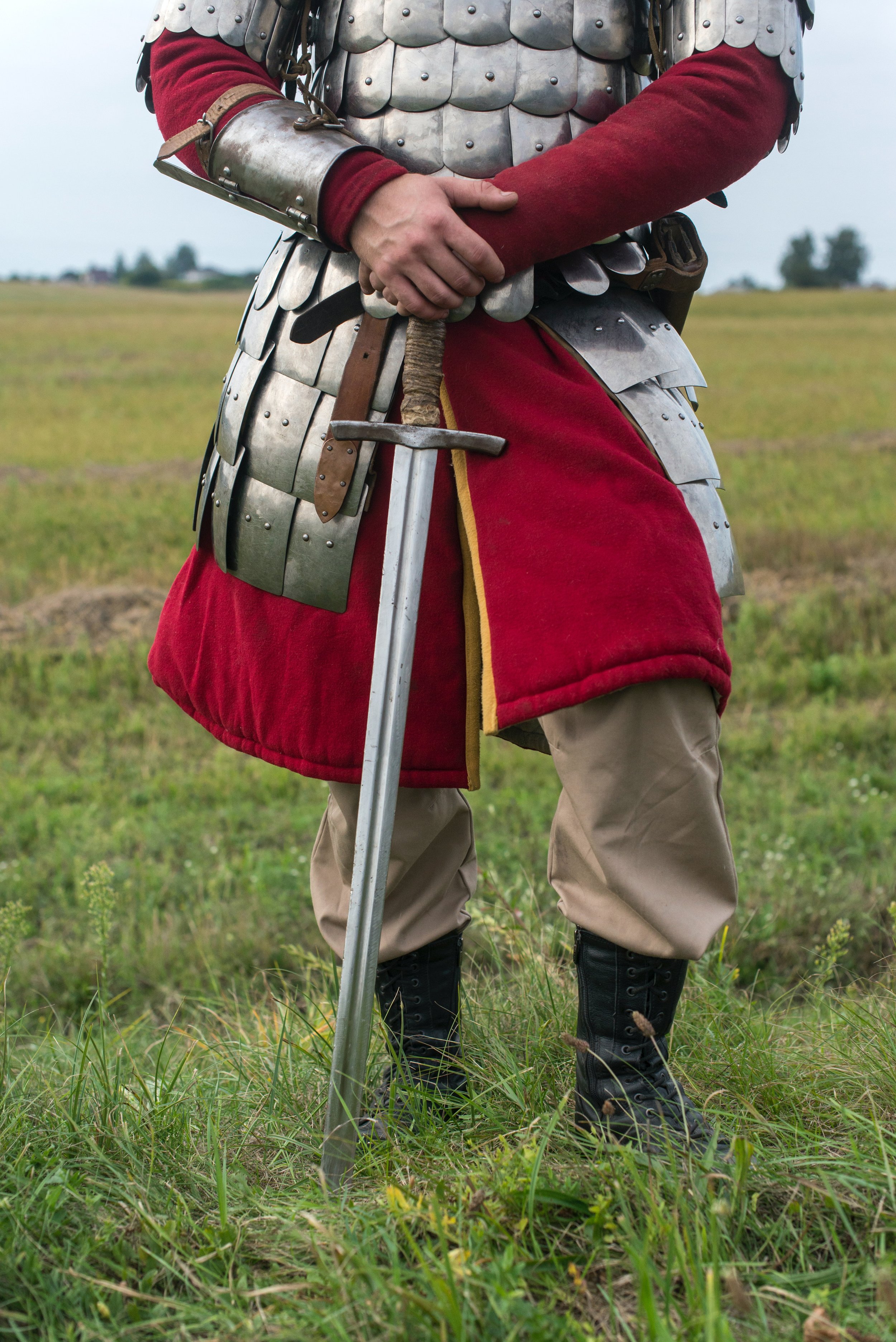Medieval Secrets of Jerusalem: Who Were The Templars?
The Knights Templar. The mere mention of their name conjures up images of medieval knights on horseback, dressed in armor covered by white garments emblazoned with red crosses, praying in castles across Europe and the Holy Land during the Crusades, secretly guarding their material wealth as well as sacred relics of Christianity, before their sudden and dramatic dissolution in the fourteenth century.
In recent years, the Knights Templar have taken on a greater fanciful allure, with mainstream books, films, and television series such as The DaVinci Code, National Treasure, and the Knightfall series further perpetuating mysteries and myths of the Templars, with some claiming the Order of Knights still exist and have kept their hidden wealth, and possibly the Holy Grail, the cup used by Christ at the Last Supper in the Cenacle of Jerusalem.
So who were the Templars, and what were they doing in Jerusalem?
The Templars, the informal name for their religious order, the Poor Fellow-Soldiers of Christ and of the Temple of Solomon, were founded as a small brotherhood of French-speaking knights who came to Jerusalem on pilgrimage or Crusade, and pledged their lives to the service of the Church and the Holy Land, choosing to use their skills as warriors to protect pilgrims on the dangerous roads to and from the Holy Land from bandits and others hostile to the Kingdom of Jerusalem. After taking vows of obedience, chastity, and poverty, the Order quickly grew in size and resources, becoming an essential part of the defense of the Kingdom and improving the safety and welfare of pilgrims. At their peak, their resources became so great that they are considered to have been the first true multinational entity, and are largely accredited with founding the first banking system, wherein pilgrims would deposit their pilgrimage travel funds in Europe at a Templar Commandery (a fortified compound that was part barracks, part monastery, part pilgrimage transit center), receive a promissory note, and redeem the amount in the Holy Land upon their arrival. Noted as fearless and gifted warriors, they eventually became an auxiliary force to the Pope, but it was not at the Vatican in Rome but at their Commandry in Jerusalem on the Temple Mount, where they occupied Al-Aqsa Mosque and converted it into their headquarters, complete with stables, a large church and living quarters. And, it would seem, the treasury of their vast wealth.
One of the great myths of the Templars is that while conducting renovations and construction on the Temple Mount, they acquired great treasures. As the Templars (and many others) believed the Temple Mount was the Temple of Solomon of the Old Testament, it was perhaps inevitable that legends of the Templars finding the alleged wealth of King Solomon would abound. Yet as mentioned, it was not just material wealth that the Templars were purported to have procured, but sacred relics of Christianity; specifically the Holy Grail of the Last Supper, and possibly, the head of St. John the Baptist. These legends have continued to grow as archaeological findings have discovered underground tunnels and passages in and around the Temple Mount, such as the recent finding of an ancient bridge within the tunnel complex.
Ultimately, the Templars left Jerusalem then retreated first to Acre, then Cyprus, until finally to Western Europe, where support for their Order began to wane and their political position between the Pope and the ruling King of France spelled their doom. Brought up on false charges by King Philip IV of France (who also owned substantial amounts of money to the Templars in the form of loans), the Templars were formally accused of heresy, arrested, tortured for false confessions, and were ultimately disbanded as an Order by the reluctant Pope Clement. Many Templars died horrific deaths, such as being burned at the stake, and all their Commanderies, lands, wealth, and assets were seized. Only in Portugal did the Order survive as a newly reconstituted Christian Order of knighthood, which ultimately became an Order of chivalry known as the Order of Christ.
While others have claimed the Order hid their wealth and became a secret society, and innumerable groups have purported to be the newly refounded Templars, the Vatican, while formally recognizing the charges against the Templars as in error, does not recognize any legitimate heirs to the Knights Templar.
And what of the headquarters of the Templars on the Temple of Solomon on the Temple Mount?
Since the fall of Crusader Jerusalem to the Muslim ruler Saladdin in 1187, the facility has reverted to the Al-Aqsa Mosque, which along with the adjacent Dome of the Rock, the iconic octagonal-shaped shrine with the gold-plated roof also within the compound on the plaza, is considered to be the third-holiest places in Islam. The Temple Mount complex is still used by local Muslims as a mosque and is visited by Muslims on pilgrimage from across the world.
Today, the Catholic Church lays no claim to the Temple Mount, and the currently existing and recognized Papal Orders of Knighthood are solely engaged in charitable works. Yet the spirit of pilgrimage and the call to service to Christ and His Church lives on in other Orders and religious movements that seek to emulate the selfless and noble call to service to the “Kingdom of Heaven” rather than the riches of this world.
Journey to the Holy Land!
Good Shepherd Travel includes Jerusalem, Nazareth and the Galilee, Bethlehem Jericho, the Jordan River, and the Dead Sea as part of our pilgrimages to the Holy Land. Other popular pilgrimage tours to locations such as Rome, Lourdes, Fatima, and Ireland are also available. For more information on how to begin preparing for a pilgrimage in late 2022 and 2023, contact Good Shepherd Travel owner and manager, Tony AbuAita at Tony@goodshepherdtravel.com.

